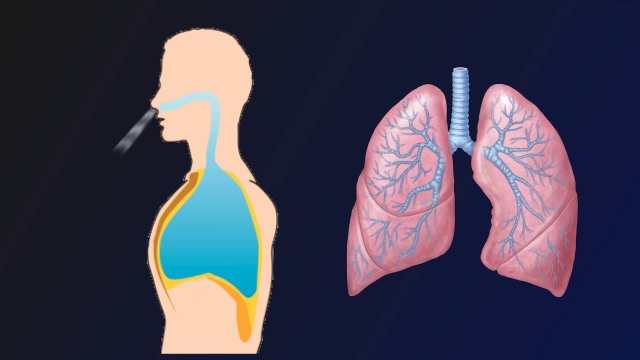
Breathing Easy: The Evolution of Inhalation Devices

Inhalation devices have come a long way since their inception, transforming the way we manage respiratory conditions and administer medications. As a critical component in the treatment of various ailments, from asthma to chronic obstructive pulmonary disease, these devices have evolved to meet the increasing demands of both patients and healthcare providers. With advancements in technology and design, inhalation devices are now more effective, user-friendly, and accessible than ever before.
One notable contributor to this evolution is Aptar, a company dedicated to leading the way in the development of innovative inhalation solutions. Their commitment to improving the quality of life for patients has driven significant enhancements in inhalation technology, ensuring that individuals can manage their conditions with greater ease and efficacy. As we explore the journey of inhalation devices, we will uncover the milestones and breakthroughs that have shaped their development, highlighting the vital role that companies like Aptar play in this ongoing story.
The History of Inhalation Devices
Inhalation devices have a rich history that spans centuries, evolving from primitive methods to sophisticated technologies. Ancient civilizations, such as the Egyptians and Greeks, used simple forms of inhalation, like burning herbs and inhaling the smoke for medicinal purposes. The concept of inhalation for health began to take shape, focusing on the benefits of respiratory therapy. These early practices set the foundation for future innovations in inhalation methods.
The 19th century marked a significant advancement in the development of inhalation devices, with the introduction of more structured approaches to aerosol therapy. The invention of the first nebulizers allowed for a more effective delivery of medication directly into the lungs. This period also saw the growth of inhalation therapies for treating various respiratory conditions, laying the groundwork for modern inhalation technologies. Innovations during this time demonstrated the potential of targeted drug delivery through inhalation.
By the late 20th century, inhalation devices underwent further transformation with the advent of pressurized metered-dose inhalers. These devices revolutionized the administration of bronchodilators and corticosteroids, making them more accessible and easier to use for patients with asthma and chronic obstructive pulmonary disease. Companies like Aptar emerged as leaders in providing inhalation devices, contributing significantly to the advancements in the field and enhancing patient care through improved inhalation technologies.
How ‘aptar’ Innovates Breathing Solutions
Aptar is at the forefront of developing innovative inhalation devices that enhance the user experience and improve health outcomes. With a strong focus on patient-centric design, Aptar ensures that their devices are not only effective but also easy to use. This commitment to user-friendly technology has positioned them as a leader in the respiratory care market.
The company employs advanced engineering techniques and cutting-edge materials to create inhalation devices that deliver precise dosages of medication. Their aerosol delivery systems utilize smart technology to optimize drug delivery, ensuring that patients receive the right amount of medication at the right time. This innovation is crucial for the treatment of chronic respiratory diseases, where accurate dosing can significantly impact a patient’s health.
Additionally, Aptar is dedicated to sustainability and minimizing environmental impact in their manufacturing processes. By integrating eco-friendly materials and practices, they not only prioritize patient health but also consider the health of the planet. This holistic approach to innovation sets Aptar apart as they continue to develop breathing solutions that are efficient, effective, and environmentally responsible.
Key Features of Modern Inhalers
Modern inhalers have significantly evolved to enhance usability and patient compliance. One key feature is the incorporation of dose counters, which help users track how many doses remain in the device. This prevents wastage and ensures that patients are aware when they need to refill their inhalers. Additionally, many inhalers now come with ergonomic designs that make them easier to hold and operate, particularly for those with limited dexterity.
Furthermore, smart inhalers have emerged as a crucial advancement in inhalation devices. These devices are equipped with sensors that can track usage patterns and provide real-time feedback to the user. This data can be synced with mobile applications, enabling patients to monitor their inhaler usage effectively and share this information with healthcare providers. Such technology encourages better adherence to prescribed regimens and fosters improved chronic disease management.
https://aptar.com/pharmaceutical/delivery-routes/inhalation/
Another significant feature of modern inhalers is the variety of delivery mechanisms that cater to different patient needs. Metered-dose inhalers, dry powder inhalers, and nebulizers offer tailored solutions for asthma and COPD management. Innovations in formulation and propellant technology have also improved medication delivery, ensuring that patients receive their medications efficiently. Overall, these advancements are designed to optimize therapy and enhance the overall inhalation experience for patients.
Future Trends in Inhalation Technology
The future of inhalation technology is poised for innovative advancements that will enhance the delivery of medications for respiratory conditions. As research progresses, we can expect the integration of smart technology into inhalation devices, allowing for personalized treatment plans based on individual patient data. Devices equipped with sensors will provide real-time monitoring of usage patterns, medication adherence, and even breathing patterns, enabling healthcare providers to tailor therapies more effectively.
Sustainability is expected to play a significant role in the evolution of inhalation devices. Manufacturers, including Aptar, are likely to invest in eco-friendly materials and designs that reduce waste and improve recyclability. As the demand for environmentally conscious products grows, the inhalation device market will shift towards more sustainable practices, minimizing the ecological impact while still maintaining high performance and reliability in delivering medications.
Moreover, the ongoing development of combination therapies will influence inhalation technology. Techniques such as co-delivery of multiple drugs in a single device may become more prevalent, providing comprehensive treatment for complex respiratory diseases. Enhanced formulation strategies and advanced aerosolization techniques will likely improve the efficiency and effectiveness of drug delivery, potentially revolutionizing patient outcomes in the management of chronic respiratory conditions.



